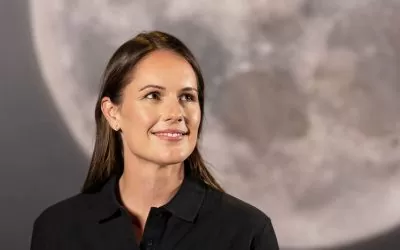It moves through the sky every day, but most of us don’t spend a lot of time thinking about the Sun, and that’s a shame!
The Sun is responsible for all life on Earth. It provides the warmth, light and energy we need to stay alive, grow crops and power our homes. Despite being 150 million kilometres away from the Earth, our Sun works tirelessly to create life-sustaining energy and keep our solar system in balance.
It’s the single most important and powerful force in our solar system, so we’re going to take a closer look at just how powerful the Sun really is!
It’s taken a long time for humans to perfect glassmaking. Even though glass is now affordable, there was a time when only the wealthiest people could afford to use it. We’re going to take a tour back through time and find out where glass came from and how it went from a rarity to a common building material!
The Sun at the Centre of Our Galaxy
Located at the centre of Earth’s solar system, the Sun is just one of the 100 thousand million stars in the Milky Way Galaxy. At about 1.3 million times larger than Earth, the Sun is the biggest object in our solar system, and it emits the light, heat and energy that makes life possible.
It’s so large that its gravity holds our entire solar system together. Earth and the other planets, asteroids, comets and tiny bits of space debris all travel around the Sun. The Sun is so massive that the effects of its gravity can be seen billions of kilometres away at the edges of our solar system. Despite its massive size, the Sun isn’t actually a solid sphere like the Earth. Instead, the Sun is made of plasma, which is a superheated type of matter that’s created by the nuclear fusion occurring at the Sun’s core.
Nuclear Fusion and the Sun
The Sun’s nuclear fusion reaction is the key to all life in our solar system. In the core of the Sun, hydrogen atoms are forced together under enormous pressures. This causes the hydrogen atoms to fuse and become helium atoms, creating a chain reaction that emits incredible amounts of energy.
Every time 1 gram of hydrogen is converted into helium, the reaction releases enough energy to power a 15-watt light bulb for more than 100 years! To put it into perspective, the Sun fuses about 620 million tonnes of hydrogen every second.
Just How Powerful is the Sun?
So the Sun is pretty powerful, but just how much energy are we talking about? Well, the Sun produces about 3.8 x 10²⁶ joules of energy every second. By comparison, the entire Earth uses about 5.8 x 10²⁰ joules of energy every year.
This means that every single second, the Sun is producing about 650,000 times as much energy as the Earth consumes in an entire year!
And all that energy gets put to good use, especially on Earth. Without the Sun’s power, the Earth would live in total darkness. There would be no wind, no rain, the plants wouldn’t grow and the planet would freeze until it was incapable of sustaining life.
How the Sun is Used in Everyday Life
Of course, as much energy as the Sun makes, not all of it reaches the Earth. Even still, humans have thousands of different uses for the Sun, but the one everyone is talking about is solar power. Thanks to special silicon semiconductors that absorb the Sun’s light and turn it into electricity, we’re able to power our modern world without needing to burn fossil fuels like coal or oil. But solar panels are just one way we use the Sun to generate electricity, because the Sun is also responsible for creating another type of renewable energy: wind.
The winds on Earth are created by the way the Sun heats the planet’s surface. Some areas receive more heat than others, so the air in our atmosphere begins to shift, with high-pressure areas moving to fill low-pressure areas. In some places this creates so much wind that we can use giant turbines to capture energy from the moving air and generate electricity! Alongside solar panels, wind generators are one of Earth’s fastest growing types of energy, with solar and wind now producing more than 10% of the world’s total electricity.
Discover More About the Sun with Science Incursions by Street Science!
The biggest, heaviest and most powerful object in our solar system, the Sun is the reason that life exists on Earth. If the Sun were just a few degrees hotter, or just a little further away from Earth, life as we know it would be totally different.
As one of our galaxy’s unexplored regions, scientists all over the world are working hard to unravel the mysteries of the Sun, and you’re welcome to join in! The Street Science team has put together a range of science incursions that teach students all about light, heat and life on Earth, so you can discover more of what we know about the Sun. Workshops like See the Light for Year 5 and the Rethink, Refuel Recover show for Years 7-10 delve deeper into the Sun and how humans use its energy on Earth. You can contact us at any time with questions, or feel free to book your workshop online!




